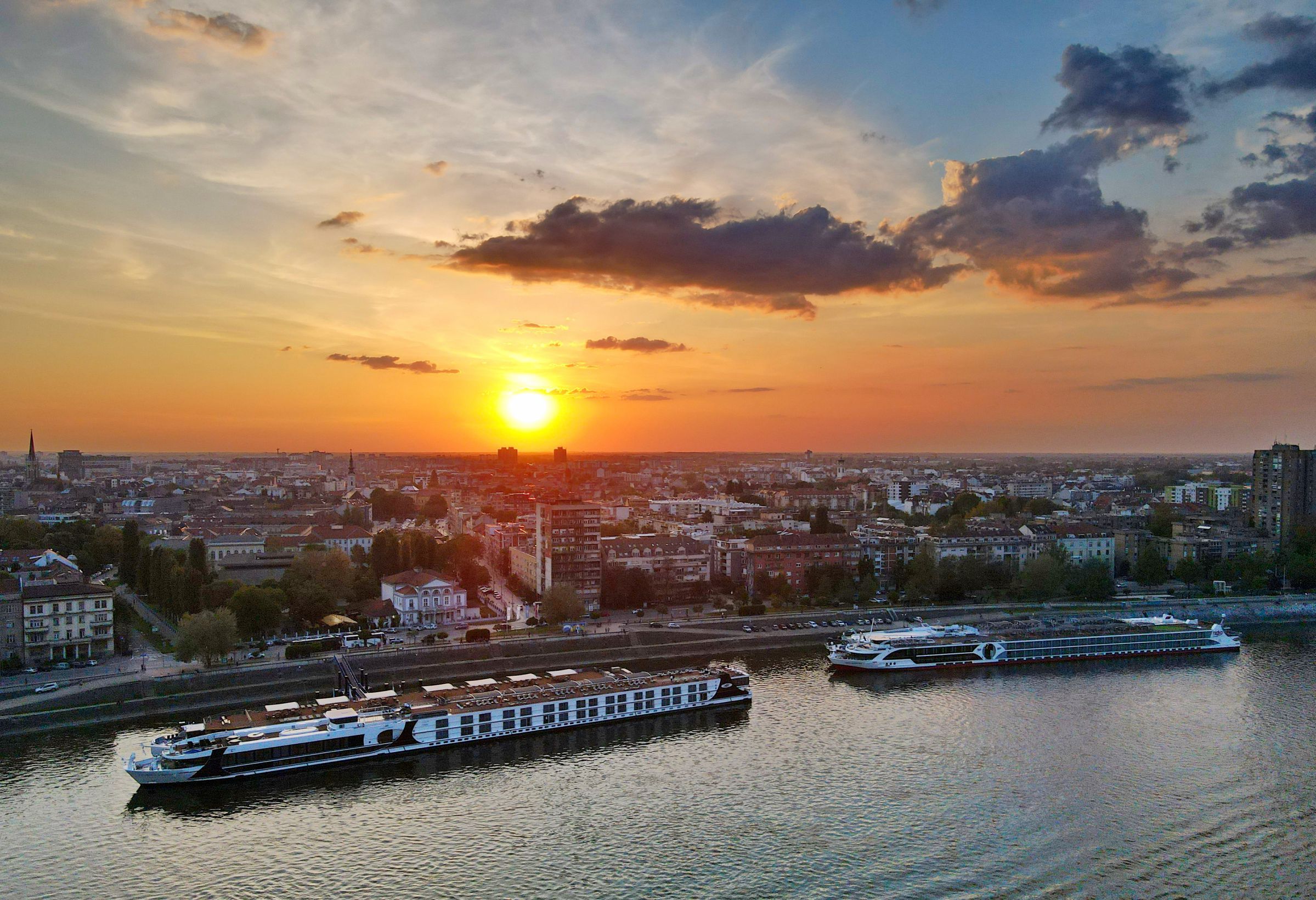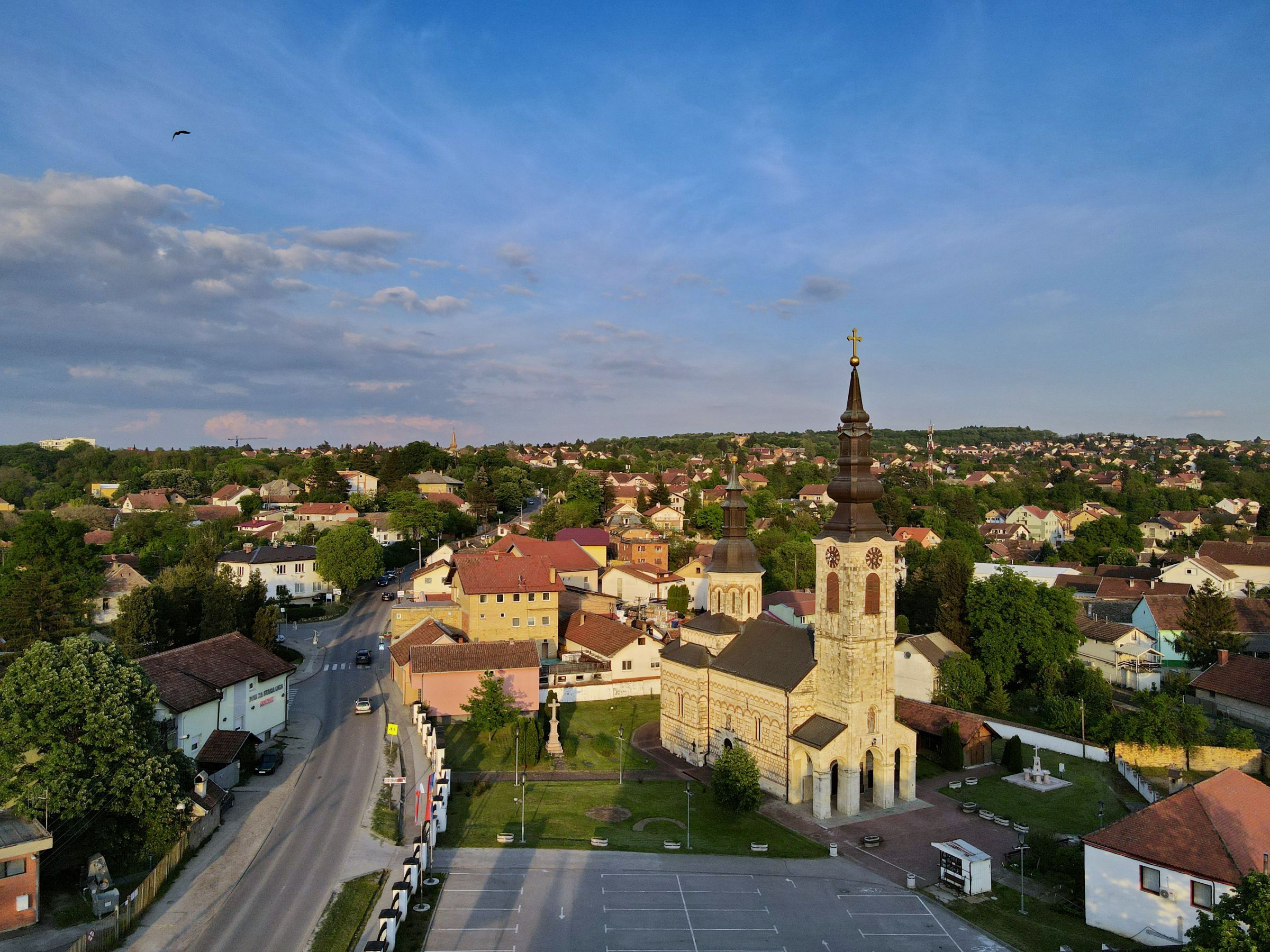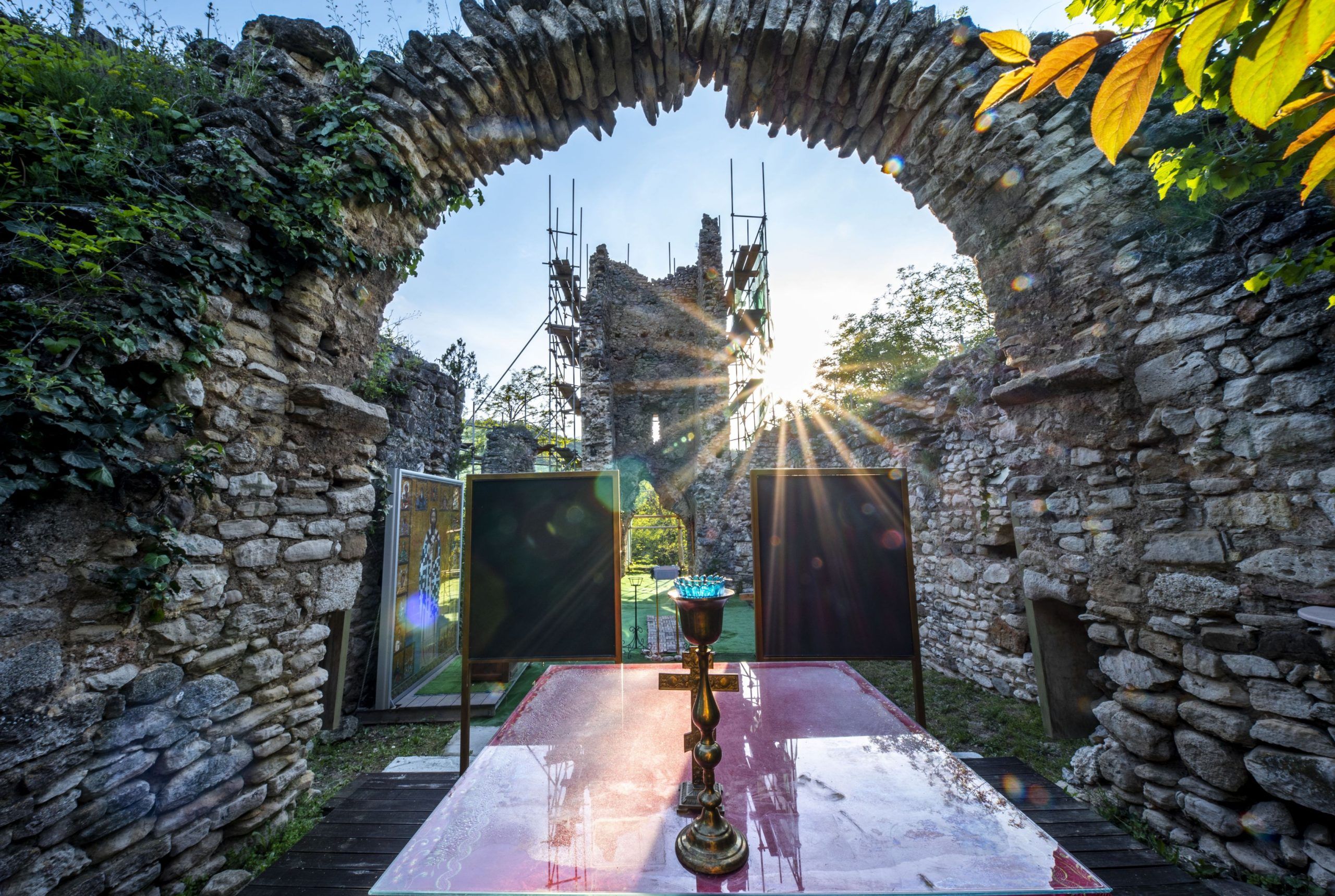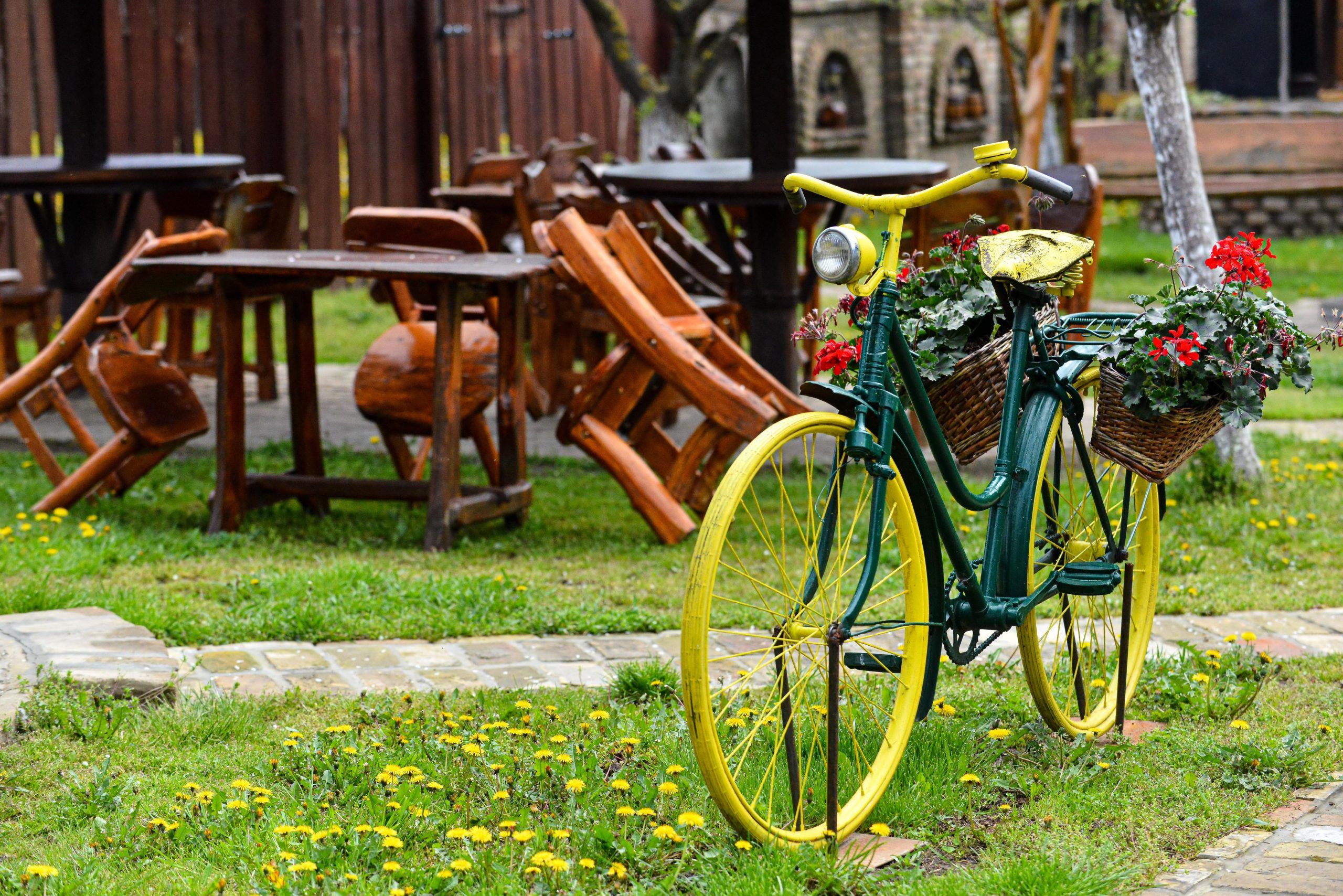Sremska Kamenica – Ledinci – Rakovac – Begeč and Temerin
It may be an unusual claim for contemporaries that an urban, highly populated Novi Sad has winemakers and winegrowers within the city perimeters. Historiography records that in the first half of the 18th century, the inhabitants of the town, which was then called Petrovaradinski Šanac, on the Srem, Fruška Gora side of the Danube, had around three hundred vineyards. The phenomenon was so widespread that almost every middle-class family had its own vineyard. The need for wine production was so great that those inhabitants of the trench who cultivated the vineyards on the monastery estates agreed to high levies – a tithe and a hoe fee (one hoe was about 1000 m2) just to have a vineyard. Contemporary Novi Sad winegrowers and winemakers are the heirs of that viticultural skill, as well as the passion associated with the grapes and wine.
Nowadays, the wine trails of Novi Sad stretch on both the Bačka and Srem sides of the city. On the Bačka side, there are wineries in the nearby municipal centre of Temerin, while in the city centre, numerous wine shops suggest to visitors that you are in an area that is par excellence wine region.
As soon as you cross from the Bačka part of Novi Sad to the Srem side in Sremska Kamenica, Ledinci and Rakovac, you can visit several Novi Sad winemakers, taste their wines and hear stories about the winemaking tradition that have been kept as bequests for generations. A part of the tradition is the modern grape assortment [1] for the production of white Fruška Gora wines: Italian Riesling, Chardonnay, Župljanka, Sauvignon, Traminac, Neoplanta, Sila, Rhine Riesling, etc., and for red wines: Merlot, Probus, Frankovka, Portuguiser, Cabernet Sauvignon, Cabernet Franc, Pinot Noir, etc.
Novi Sad on the Bačka side
Along the main tourist routes in Novi Sad, there are numerous wine shops and wine stores where you can ask for an advice on choosing wine, and then buy Fruška Gora and wines from other regions. As a rule, these are pleasant places that fans of this drink of the gods gladly visit. In the very centre of the city there are the Vinoteka Naša vina (Dunavska Street 31), Vinoteka Vina Vojvodine (Mite Ružića Street 2), SL vinoteka (Pozorišni trg 4), Vinoteka Vino i tako to (Maksima Gorkog Street 17a), Vino i Vinili Wine Shop (Žitni trg 11).
Although in the wine shops and stores listed above you can also find Fruška Gora wines, the winemakers from Sremski Karlovci, Rakovac and other places have their own shops such as Dulka Vinoteka (Dulka Wine Shop) (Vojvode Bojovića Street 9 and Ćirpanova Street 6) and Vinarija Salaxia (Salaxia Winery) (Lasla Gala Street 17). Novi Sad hosts important international wine fairs, including the International Wine Festival Interfest (June), Mačak’s Day of the Young Portuguiser (November) and the Novi Sad Wine Salon (April). Fruška Gora winemakers, but also those from other wine areas, have the opportunity to sell their wines and other products during numerous events that take place outdoors in the city.
Begeč is a Novi Sad suburban settlement that can be reached by local bus. It is assumed that the place got its name during the rule of the Ottomans and that in Turkish “Begeč” could mean Bey’s village. Within this Danube settlement with a typical layout of houses, it is easy to notice the bell tower of the Church of the Holy Apostle Luke from the first half of the 19th century. There is an artesian well in the settlement, once a common occurrence in places in Vojvodina, and as clean water becomes a rarity, it is not impossible that the facility in Begeč will become a necessity and a tourist attraction.
Traces of history within the Begeč area are significant, but they are not prepared for tourist visits. This primarily refers to the remains of a Roman fortification with a port (Castellum Onagrinum) built at the end of the 3rd century, which, together with Bononia (Banoštor) on the other side of the Danube, was a part of the system of fortifications on the Danube. Archaeological excavations at this site have shown that there are necropolises and graves from the time of the migration of the people, as well as the Saramatian necropolis. It is also known that there was a Catholic monastery in the area of Begeč in the 12th century.
The modern settlement has significant tourist attractions that are an integral part of the tourist offer of the Novi Sad area. These are: “Begečka jama” Nature Park, “Čarda kod Braše” (“Tavern at Braša’s”), “Čarda na Jami” (“Tavern at Jama”), “Cvejin salaš” (“Cveja’s Salaš Farmstead”) and recently the Vojnović Winery.

Sremska Kamenica
When you cross the Danube from Bačka to the Srem side, it will be quite clear that you are on the side of the city that begins and ends with the slopes of Fruška Gora, which sometimes fall steeply and then gently into a large river. And while Petrovaradin, with its mighty fortress on the rock, captures the imagination of visitors, the undulating and green slopes of Sremska Kamenica suggest an exciting encounter with nature and wines.
For wine lovers, there is the Šukac Cellar, owned by the Savić family, where the tradition of winemaking is continued nowadays by the sixth generation of this Sremska Kamenica family.

If you do not want to leave the urban environment after tasting and buying wine, you can end the day by walking through Sremska Kamenica and visiting the Serbian Orthodox Church of the Holy Mother’s Nativity (1758) and the Roman Catholic Church of the Holy Sepulchre (1811) in the centre, and Zmaj’s Museum, and take a rest in the Kamenica Park where you can also try the excellent fish soup at Čarda Sremac (Sremac Fish Tavern).
Association of Fishermen and the Danube Lovers “Sremac”. Karađorđeva Street 16, Sremska Kamenica
Memorial Collection “Jovan Jovanović Zmaj” (Zmaj’s Museum), Jovana Jovanovića Zmaja Street 1, Sremska Kamenica www.museumns.rs
Ledinci
If you decide to go deeper into the Fruška Gora landscape in the desire to continue to get to know Fruška Gora wines, the road will take you to Ledinci, to the Antonijević Family Winery, one of Fruška Gora estates that has been committed to the tradition of grape growing and wine production for five generations now, while you can find Miljević Cellar. in Stari Ledinci, at the beginning of the territory of the National Park “Fruška Gora”. The Miljevićis, like many winemakers, are people of special talents, which you will understand as soon as you step onto their property.

Stari Ledinci is a place with a turbulent history. The village was burned in 1942 and then rebuilt for decades. Traces of history are two fountains in Stari Ledinci with carved years 1842 and 1885, as well as the remains of a medieval church in the settlement of Klisa, which some researchers believe is the missing monastery of St. Sava that is mentioned in the 16th century. For lovers of walking, the path to the lookout point above the Ledinci Lake the path leads through the Zvečan spring. You can also choose other paths for a walk towards Pera’s Cave or towards the Popovica and Orlovo Bojište picnic areas. Fans of gastronomic pleasures will not miss to visit the Stojadinović-Pintar Family Farm (Naša farma kozica) and buy goat’s milk products. You should not miss the gastronomic pleasure, which includes Fruška Gora wines at the Vidikovac Restaurant, which offers a panoramic view of Novi Sad.
Stojadinović-Pintar Family Farm, Vuka Karadžića Street 55, Stari Ledinci
Vidikovac Restaurant, Samarski put bb, Ledinci http://www.vidikovac.rs/
Rakovac
A one-day trip to Rakovac will bring you new experiences. Lovers of wine pleasures will head, upon a prior notice, to Vinarija Salaxia and Imperator Organic Winery. It is a family story created at a place where viticulture has been the driver of life for centuries. On the stretch of Salaksija, which offers a million dollars view of the Danube, there is another winery where you can enjoy top wines – Dumo Winery.
Rakovac is not a unique settlement. Stari Rakovac (Old Rakovac), where the serfs of the Rakovac monastery estate used to live, was burned down in 1942. The memorials of the People’s Liberation Movement, Stručica and Kamenolom, and the Monument to the fighters who were killed during the armed struggle at the same location talk about the suffering of the settlement and its residents during the World War II, as well as about a strong antifascist tradition of the residents of Rakovac. After the war, Stari Rakovac was partially renovated, and Novi Rakovac (New Rakovac) was built so that the majority of houses were built along the Novi Sad-Beočin road.

On the southern edge of Novi Rakovac, 2 km from the Salaxia Winery, next to the local primary school, there are the remains of the archaeological site Gradina – Dumbovo. In the Roman period, there was a villa rustic there on the northern border of the empire, in the Middle Ages the richest Benedictine monastery at Fruška Gora, out of about ten at that time, and during the Turkish rule the existence of the village of Dumbovo was registered there. Archaeological researches have shown that this is an area where the oldest layers originate from the Old Iron Age.
Picnic goers, visitors, especially participants of pilgrimage journeys will not miss the opportunity to visit the Serbian Orthodox Monastery Rakovac from 1545. Nature lovers can visit the picnic area and the Zmajevac lookout at the intersection of Partizanski and Rakovac-Vrdnik road, 4km away from the Salaxia Winery. The area is protected as a scientific and research site, and it is adorned with forest communities of oak, beech and hornbeam. From the lookout point you can see the Vrdnik Tower and the spa-tourist settlement Vrdnik, while in nice weather you can also see the lower Srem. The Zip line starts from Zmajevac towards the Ethno Village Vrdnička kula. The Serbian Orthodox monastery Vrdnička Ravanica that was built in 1811 on older foundations is also located in Vrdnik.
Serbian Orthodox Monastery Rakovac www.eparhija-sremska.rs/manastiri/rakovac/
Ethno Village Vrdnička kula, Staza zdravlja 34, Vrdnik www.etnoselo-vk.rs/index-1.html
Fruške Terme, Staza zdravlja 39, Vrdnik www.frusketerme.com/Contact.html
Serbian Orthodox Monastery Ravanica Vrdnik www.eparhija-sremska.rs/manastiri/vrdnik-ravanica/
Wine makers from Temerin
Temerin is a multiethnic municipal centre in Bačka, which is 20 km away from Novi Sad. Today, it is a town that pulsates with new contents of stay interesting for tourists, such as pools with thermo-mineral water, “salaš” farmsteads, wineries and the Jegrička Nature Park. Temerin is the host of the International January Wine Fair (January 25th), organized by “Društvo prijatelja bašte” (Temerini Kertbarátkör/Society of Friends of the Garden), which brings together winemakers from Serbia, Hungary, Croatia, Slovakia, Slovenia, Moldova and Bulgaria.
When it comes to wineries, there are Vindulo Vineyards and Winery – carefully planned family business created on the heritage of generations who lived in times when every farm in Bačka had a vineyard, as well as Craft Kabach Winery, a family winery where everything is done by hand, with love and attention, so the quantities of wine produced are limited, but at the same time determined by the high handmade & craftmade quality.
Do not miss to visit the Jegrička Nature Park, on the Novi Sad – Bečej road, 2 km away from the centre of Temerin. Jegrička is a watercourse composed of a series of connected ponds. This area is on the list of Internationally Important Bird Areas (IBA) and Internationally Important Plant Areas (IPA). The visitors are offered opportunities to walk along the health trails in nature, watch birds and ride boats and catamarans. You can get all the necessary information in the Information Centre of the Jegrička Nature Park.

There are several interesting “salaš” farmsteads nearby. Bucin salaš in Temerin is a place not to be missed. In spring, it is an island of unexpected contents within the greenery of wheat and silence that strikes the visitors from the city as a miracle. On the vast green space there is a garden-restaurant, football court with other facilities for children, the main house in a country style that houses the restaurant and accommodation facilities. There are several dozen animals living on the farm, of which horses (which you can rent for riding), goats, ducks, and geese, are the expected inhabitants of a typical farm in Vojvodina, but there also llamas, which exchanged the Andes for the Bačka plain. All this is covered by reed roofs that remind of the long passed Vojvodina times.
Information Centre of the Jegrička Nature Park, Bečejski put bb, Temerin www.vodevojvodine.rs
Bucin salaš, Proleterska Street, Temerin. Facebook: @Bucinsalas
Offer of “salaš” farmsteads, tourist tours and things you can also visit in Temerin and its surroundings can be found at http://www.temerintourism.org.rs/contact/
For more information about farmstands (“salaši”), tours and tourist offer of Temerin and surroundings visit: http://www.temerintourism.org.rs/en/
Text: Gordana Stojaković
Photographs: Aleksandar Milutinović
Tourism Organisation of the City of Novi Sad is not responsible for changes in information and services.
The text posted in: May 2021
[1] The grape assortment as well as the transcription of the grape varieties given according to: Cindrić, Petar and Vladimir Kovač (2007) “Vinogradarstvo i vina“ (“Viticulture and Wines“) Fruška Gora. Ed. Nebojša Jovanović and Jelica Nedić. Pg. 498. Beograd: Zavod za udžbenike.